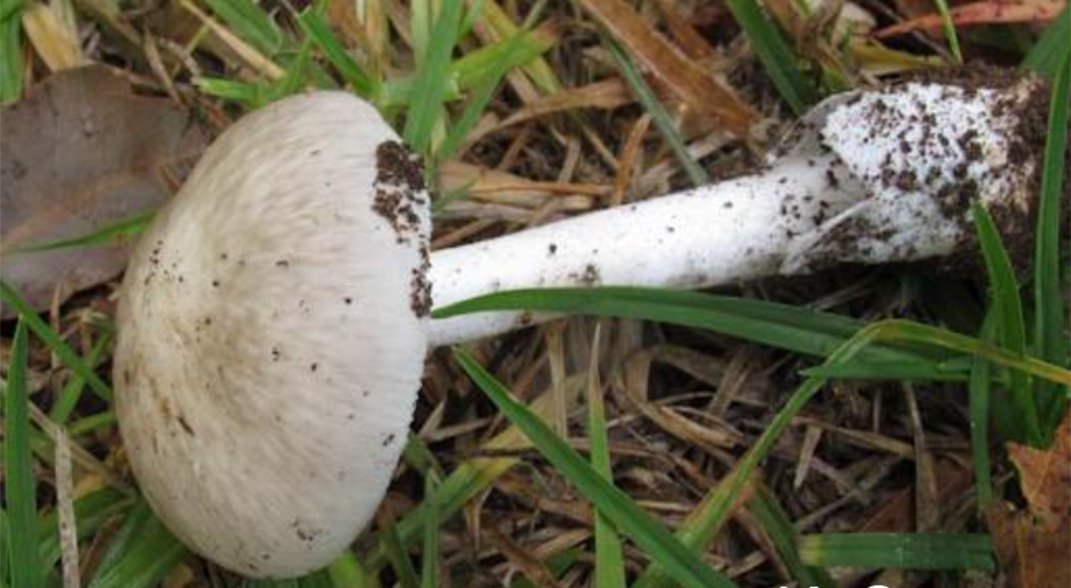Deadly mushroom found in WA

TWENTY-FIVE YEARS after its collection, a fungi specimen from south-west Western Australia has been identified as a species of toxic death cap.
The poisonous mushroom was collected from WA’s Denmark region by fungi enthusiast Katrina Syme a quarter of a century ago, but was not identified until recently.
Dr Elaine Davison, an adjunct researcher at Curtin University and research associate of the WA Herbarium, has a long-standing interest in the Amanita group of mushrooms, but says they are not always easy to identify.

The mushrooms are native to NSW and contain two deadly toxins. (Credit: K. Syme)
“There are a lot of them, many are undescribed and the species are difficult to distinguish from one another,” she said.
Using DNA analysis and detailed comparisons with other Amanita species, Elaine identified several specimens collected from the Denmark area as marbled death caps (Amanita marmorata), a potentially deadly variety native to NSW.
This particular species – as with other Amanitas – is mycorrhizal (growing on the roots of plants), and is thought to have been introduced to the region on the roots of infected seedlings.
Containing not one, but two deadly toxins – amatoxins and phallotoxins – these mushrooms pose a huge health risk, and the WA Department of Health has issued a warning for Western Australians not to gather or eat wild mushrooms from the South West and Great Southern regions.
Fatal fungi
The Amanita genus contains at least 1000 species across the globe, from edible varieties to the extremely toxic, and is responsible for most of the world’s mushroom poisonings.
Over the years, health warnings have been issued in a number of Australian states including ACT, SA and Victoria regarding an introduced species of death cap (Amanita phalloides), which was responsible for two deaths in Canberra in 2012.
Dr Brett Summerell, director of science and conservation at the Royal Botanic Garden, said foraging for wild mushrooms is an extremely dangerous activity, and urges people against it.
“It’s a really bad idea,” he said.
“At a particular stage in its growth cycle, death caps look like a straw mushroom, which is quite popular in Asian cuisine – that’s where you get the problem.
“You’re better off going to the supermarket.”
RELATED: Australia’s most poisonous plants
A single death cap mushroom can kill an adult, while it takes even less for a child – with the mortality rate at about 50 per cent.
Upon ingestion, the toxins enter the bloodstream, where they concentrate in the liver, causing initial symptoms including abdominal pains, nausea and diarrhoea, and eventually – without early and effective medical intervention – multiple organ failure and death.
“It can be extremely serious – lots of people around the world die from death caps,” Brett said.
“We are trying to get the message out there about how bad an idea it is to be foraging for wild mushrooms.”
READ MORE:




